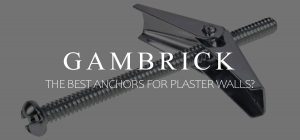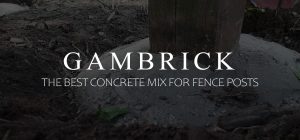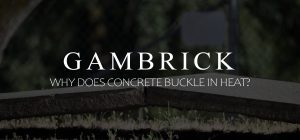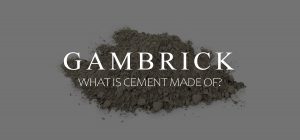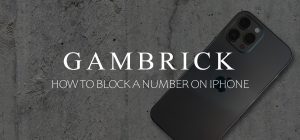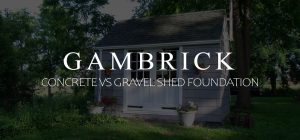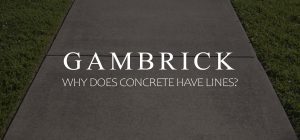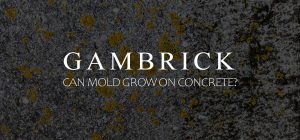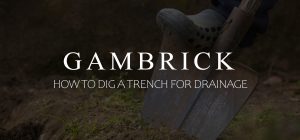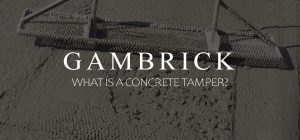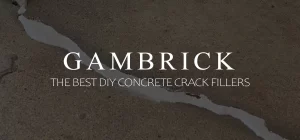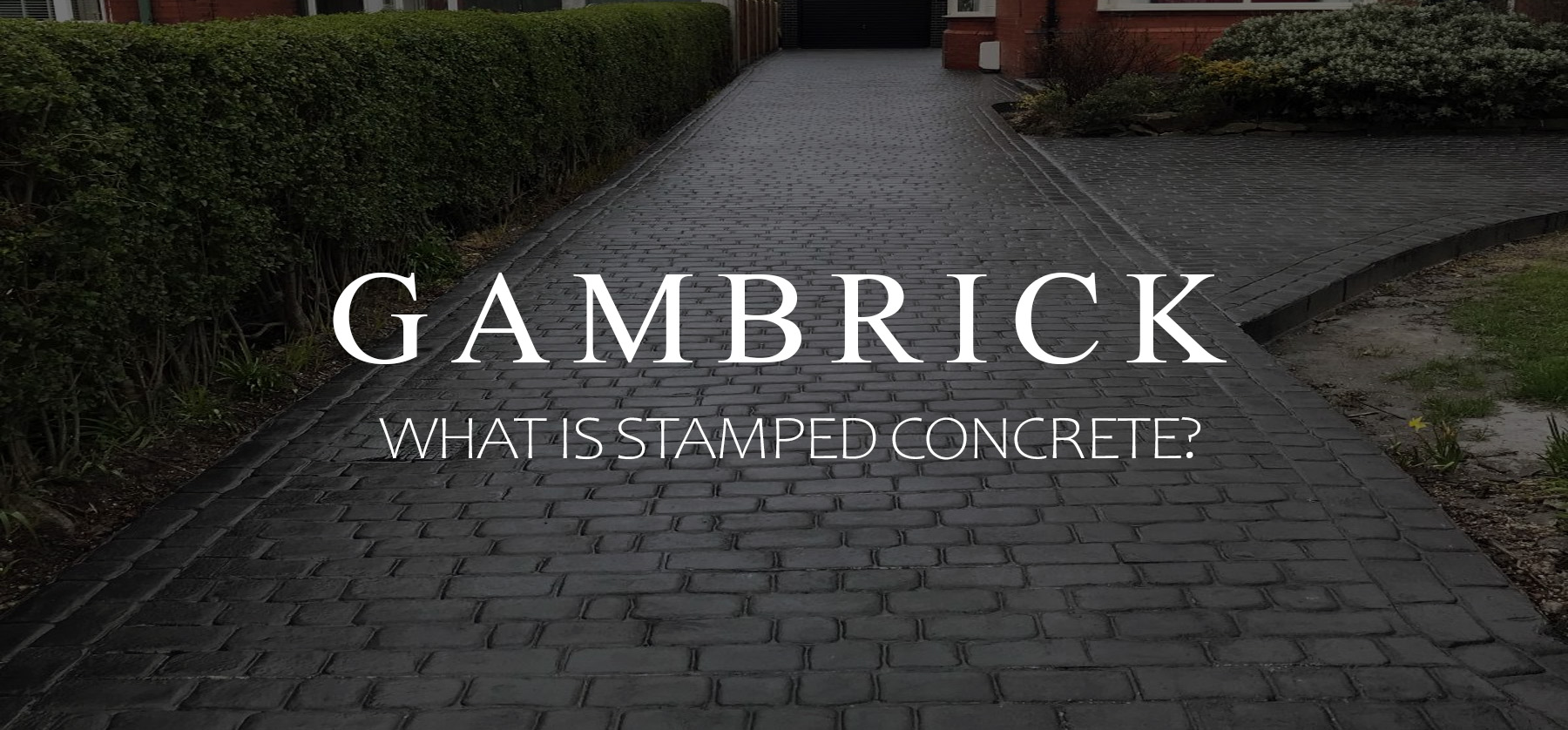
What Is Stamped Concrete?
Stamped concrete uses specially made stamps to imprint the look and texture of stone, brick, tile and even wood into a concrete slab. Concrete stamps are a type of mold that’s press hard into a slab as it’s drying. When the stamp is removed the concrete retains the mold’s look and texture. Color can also be added to create a more natural appearance. The purpose of stamped concrete is to make a regular concrete slab look like it’s made of another material. The most common stamps are brick, flagstone and tile. Stamps come in a variety of sizes and styles. They’re primarily used to form flat-work like driveways, pool-decks, walkways, steps and more.
Stamped concrete is also called textured or imprinted concrete. Because it’s an artistic way to finish concrete, not all masons do it. The stamps have to be applied to the concrete while it’s drying but before it hardens. Usually this is done before forms are removed. The timing has to be just right. If the stamps are applied to early, the concrete won’t retain the molds shape. Apply them too late and the concrete will be too hard to press the forms into.
I’ve been a mason for over 25 years and can tell your firsthand the main benefits of stamped concrete are looks, added texture, and price. By using stamps you can make a concrete slab look like real stone or brick, but for a lot less money. On average a stamped concrete slab is at least 25% less expensive than using real brick, stone or pavers, but it’s also about 25% more than regular concrete.
Stamped concrete brings the high-end look of stone, brick, or wood to patio and driveways, and additional texture, which makes it a great addition around concrete pools and spas.
What’s The Difference Between Regular Concrete & Stamped Concrete
The concrete used to pour a regular slab ans a stamped concrete slab are exactly the same. There is no difference in the concrete whatsoever, but the method used to finish the concrete is different.
A regular concrete is finished with trowels, floats, brooms and edgers. The center of the slab is either troweled smooth or broom finished while the edges are made smooth with a tool called an edger. Colors can be added into the wet concrete or thrown on top later for a special effect.
Joints are cut into the slab after it hardens to prevent cracks.
Stamped concrete slabs use a float to make them smooth, but instead of using trowels, brooms and an edger to finish the surface, stamps are applied.
Stamps are small rubber molds which shape the concrete surface into things like tiles, wood, bricks or stones. They mimic not only the shape of another materials but also its texture.
Most stamped concrete slabs are also colored. Multiple colors are usually used to make the concrete look more natural. This includes colors inside the wet concrete and additional colors spread over the surface of the slab.
With either type of slab, a sealant should be used to help preserve and protect the concrete. However, many stamped concrete sealants also include color enhancers which bring out the color in the concrete.
Both regular concrete and stamped concrete slabs can be repaired with a crack filler if small cracks open up. Crack fillers seal the crack and help prevent future damage.

Pros and Cons of Stamped Concrete
Stamped concrete is a very popular finishing choice as a patio, walkway, driveway, stairs or pool-deck. You get the look of real stone, brick, wood, tile or pavers with the extreme durability, strength and longevity of concrete. And for a lot less money.
On average, stamped concrete is at least 25% cheaper than the tile, brick or stone it’s designed to look like.
In addition to looks, its main benefit is durability, versatility and weather resistance. Concrete is very strong and durable. It’s naturally resistant to the elements and takes the form of any mold it’s poured into or pressed against. And it can be colored which means almost unlimited design options.
If the surface is finished with texture or another non-skid additive, it’s a safe, slip-resistant surface that’s great for wet areas.
Stamped concrete is a design feature that can enhance your home’s value for a lot less than brick, wood or stone.
A downside is that it’s not a DIY project. Even some professional masons don’t know how to do it. It’s a specialty that takes a level of expertise.
It’s recommended to reseal the surface every two to five years to keep it looking its best.That means long term expenses after the jobs done.
If the surface ever cracks it can be difficult to repair and you may not be able to match the stamped pattern to the rest of the slab.
Considering stamped concrete? Here’s a list of pros and cons to help you decide if it’s right for you.
Pros:
- More affordable than natural stone, brick, wood, tile or pavers
- Can add to your home’s value
- Nearly limitless pattern and color choices
- Slip resistant when treated with a non-skid additive
- Durable and long-lasting
- Weather resistant
- Easy to maintain
- Attractive finishes
Cons:
- Not a DIY project
- Can develop cracks
- Needs resealing
- Repairs can be difficult to make
- Doesn’t look as natural as real stone, brick, tile, pavers or wood
- Large slabs require joints
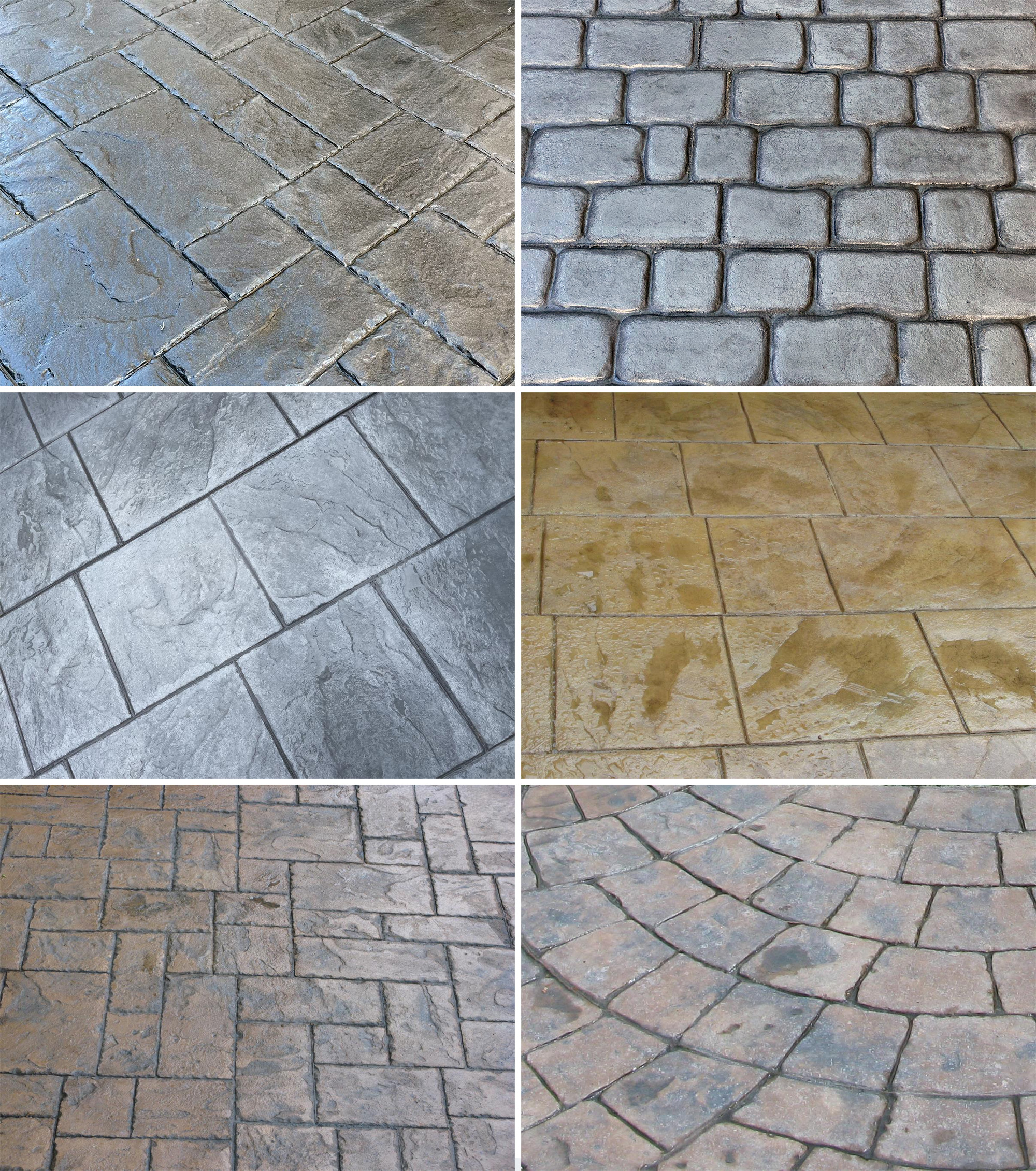
Stamped Concrete Styles
Stamped concrete is made by using rubber stamps or texturing mats to imprint a pattern into wet concrete. After the slab is poured, but before it hardens, stamps are pressed into the concrete. When they’re removed the impression of the stamp remains.
Most stamps are molds of the real materials they mimic to get the right size and texture. They can make your slab look like brick, stone, pavers, wood tile and a lot more. They come in a wide variety of shapes, styles and designs.
Medallions and other custom accents can be added to the slab just like you can with real materials.
Stamps can be applied vertically and horizontally. This means you can use them not only on floors but also walls. They’re great for fireplaces or to create the look of brick or stone veneer.
Stamped concrete is more commonly found outside the home but it can also be used inside.
Colors can be added to the surface after the stamps are removed. This creates a more natural appearance. Especially if multiple colors are used.
Non-slip additives can also be added to the surface after the coloring is done. This is a great option in wet areas like pool-decks.
Stamped Concrete Designs
Stamped concrete has a wide variety of pattern and color options which are virtually unlimited. Multiple colors can be added to every slab with any pattern. The color is added by the masons so no two slabs are ever created equal.
The best stamped concrete projects blend in with the landscaping, home and environment. Try to choose a pattern and color scheme that works with the rest of the home’s aesthetics.
If you have existing stone, brick or wood on the house, choose a texture that flows with what’s existing. In many cases, you can carry the look of the home’s finishes seamlessly to the concrete. This is great for accent pieces.
For example, if you have some brick on the house, such as a fireplace, carry that look down the ground by using a stamped brick borer around your concrete. You can even match the color of the chimney brick by using additive colors on the slab.
Patterns
The most popular style of stamped concrete is natural stone. Stamps come in a variety of sizes and patterns. You can then add coloring to the surface to mimic the grain and coloring of the real stone.
Brick is the next most popular style. Stamps come in a few different sizes and patterns. These include but are not limited to running bond and herringbone. You use multiple patterns of brick on the same patio. I like a herringbone center with a soldier brick border.
Cobblestone and wood patterns are the next most popular patterns.
You can use different patterns on the same patio. Try a cobblestone or wood patio with a brick border.
If you use multiple patterns, colors can be added to each pattern separately. This helps create some definition between the patterns. Try a gray or bluish center with a red brick border for a classic look.
Colors
The most popular colors tend to natural grays and earth tones. Most people try to mimic the look of real materials as closely as possible.
However, brick patterns are usually colored in reddish hues to create the look of real red brick.
Multiple colors can be mixed or layered on top of one another to create all sorts of styles.
Try using surface colors along with stains or tints to create even more depth.
Multiple colors can be used within the same slab to create a more realistic look.
Stamped Concrete vs. Other Materials
Popular materials like brick, tile, wood, pavers and stone look great and enhance the value of your home. But although the look great they’re also more expensive than concrete. If you want the same look but are on a budget, consider using stamped concrete instead.
Most materials like stone, brick and wood are chosen primarily for their looks. It’s hard to beat the beauty of the real thing.
Natural materials have a fantastic color, texture and uniqueness that’s impossible to beat with concrete. However, with stamping and the right colors a stamped concrete slab can come close.
It takes a lot more labor to build a real stone, paver or brick patio. Each piece must be individually placed by hand. When patters like herringbone are made, pieces must also be cut to the correct size. However when you use stamped concrete the slab can be poured in a day. An entire patio is usually formed, poured, stamped and colored in just a few days.
Working with stamped concrete vs real materials is a lot less labor and much faster. if you’re on a budget or need a project done fast concrete is the way to go.
Real masonry materials need finishing in the joints. This can be loose sand, polymeric sand or grout. However stamped concrete doesn’t need finished joints because the slab is solid.
Stamped concrete doesn’t look real enough to be mistaken for natural materials. However, if done right the look comes close. And it requires less maintenance while providing higher durability than the real thing for a lot less money.
Comparing Stamped Concrete To Natural Materials
When comparing stamped concrete to the natural materials it mimics, it excels in many categories:
- Versatility: No other material offers the same amount of patterns, colors and customization that’s possible with stamps.
- Maintenance: Stamped concrete has very low maintenance and can last for decades. Other materials like pavers require constant joint sand repair and weed pulling. Wood requires sanding, staining, painting and/or sealing. Stone needs joint repairs. But concrete only requires a periodic sealing every few years.
- Time: Stamped concrete installation is much faster than build a natural stone, brick, tile or real stone patio. In most cases, an entire stamped patio can be formed, poured, stamped, colored and sealed in just a few days.
- Price: Stamped concrete costs considerably less than building a patio out of natural materials. Not only is the material less money but it’s also a lot less labor intensive. And the long term costs are better too because it requires almost no maintenance.
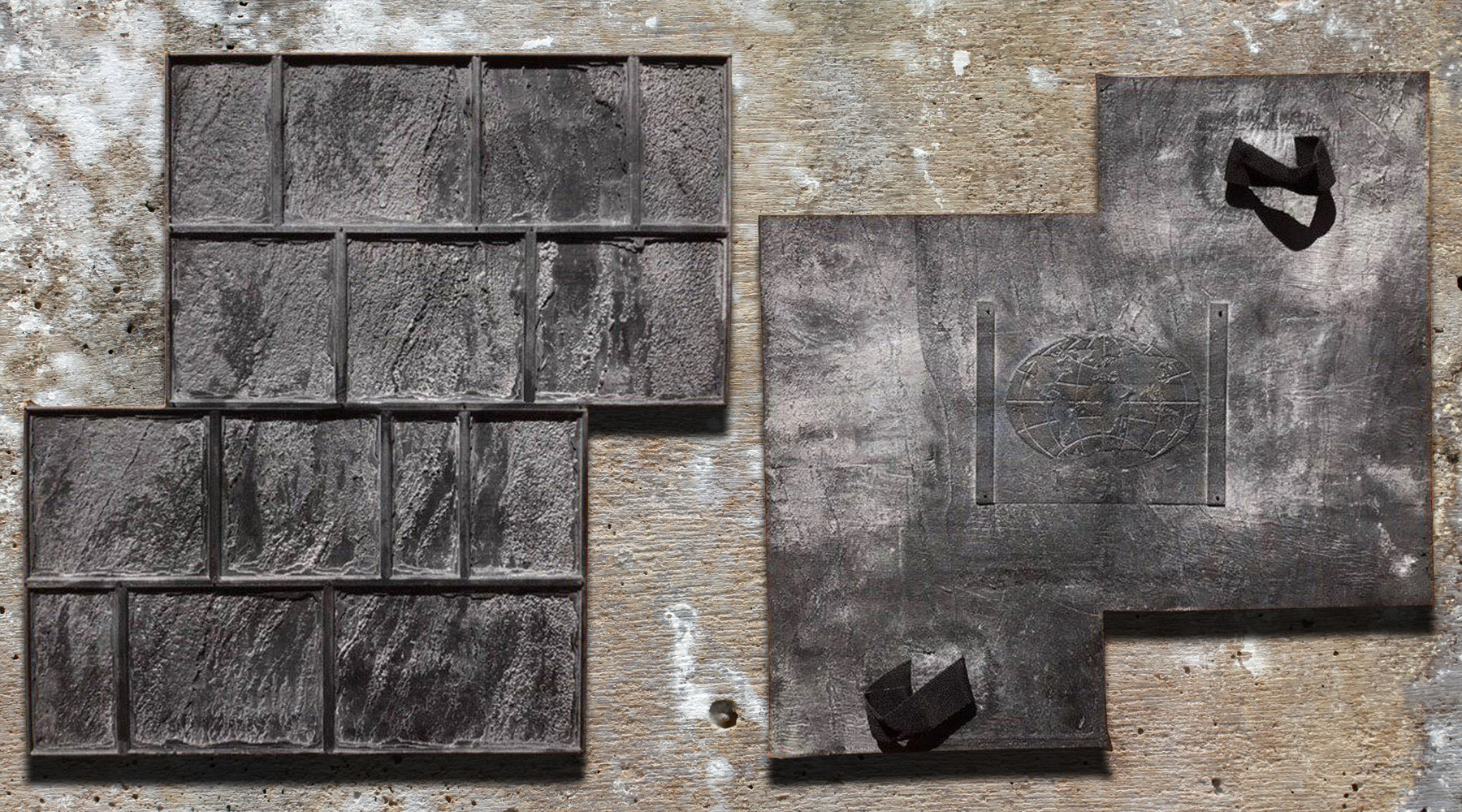
How Is Stamped Concrete Installed
Stamped concrete is a way to finish a concrete slab. But the concrete is exactly the same whether you trowel, broom or stamp the concrete.
There are multiple steps involved when you stamp a concrete slab.
Each step must be executed carefully and and at the right time to achieve good results across the entire slab. Time is constantly working against you because concrete starts hardening as soon as it’s poured.
Timing is essential. If you apply the stamps too soon the concrete won’t hold its form. However, wait too long and the concrete will be too hard to push the stamp into. There’s a window of opportunity when concrete is hard enough to be molded but soft enough to apply the stamps. Its in this short window of a few hours that you have to get your finish work done.
Water can be misted over the slab to slow down the curing process. This buys the masons more time to work.
All your tools, stamps, colors, additives and labor must be ready to go when the time is right.
After concrete is poured and allowed to set to the right consistency, colors and additives can be applied to the surface.
Release agents can be applied to the stamps. This helps release the stamp from the concrete after it’s been pressed hard into the surface.
Concrete is always tested before applying the stamps to make sure the consistency is right.
Finish work, detailing, additional colors, additives and cutting joints are all done after the stamping is complete.
Stamping is usually done on freshly poured concrete. However, existing concrete can be covered with a stamped overlay by using a bonding agent. In some cases a new stamped slab can be poured right on top of the old one.
Step By Step
Creating stamped concrete is a complicated task that involves great timing, skill and the right tools. Not all masons provide the service because its considered a specialty.
Here are the general steps we follow in order:
- Pour cement no less than 4 inches thick. Pressing stamps into the slab creates thin areas at the joints. If the slab is too thin the joints could crack.
- Color can be added into the mixer and/or after the cement is poured. The former method is called “integral coloring,” while the latter is called “broadcast or surface coloring.” Surface coloring is harder to do but creates a more realistic look. it’s the best way to mimic the look of natural materials. Integral colors add an even solid coloring to the entire slab which looks fake. However both methods can be used together to create a very realistic look.
- Apply a color release agent. A color release is an accent color that gives stamped concrete some added dimension. It also has a nonstick element that helps the mats come off without pulling up concrete.
- Press the stamps into the slab. There are usually not enough mats to cover the entire area so they’re applied and then moved from one section to the next. It’s very important to carefully line up the mats as you reposition them. If you don’t align the stamps properly the pattern could be ruined.
- Add some final colors or non-stick additives to the surface.
- Let the concrete dry for 24 hours.
- Pressure wash the slab lightly.
- Add a clear sealant and let it dry.
Concrete should be dry enough to walk on in about 48 hours and to drive on in a week. It takes about a month to fully cure. Weather conditions and temperature effect how quickly concrete cures.
Warning
Stamped concrete is not a DIY project. Stamping and coloring concrete is an art that not even all masons can do. Special tools and an experienced crew are necessary because you’ll be working on a tight time-frame.
However, if you decide to try it out, start on a small slab first. You can rent the mats and buy all the necessary equipment at most concrete supply houses.
What Are Concrete Stamps?
Concrete stamps, or mats, are forms which are depressed into wet concrete to create a shape.
Concrete is a unique materials. It’s malleable and takes the shape of any mold it’s poured into. When it hardens it retains the shape of the mold. Concrete stamps are a type of mold that’s pressed into the concrete rather than having the concrete poured into it.
Concrete can sometimes stick to the mold as it’s being pulled out of the slab. To prevent this, a release agent can be used. It prevents wet concrete from sticking to the mold.
Stamps are made from tough rubber which is very hard to damage. Even though concrete is rough and contains stones, it won’t damage the stamp.
When the slab is hard, a mallet can be used to help push the stamp down into the concrete. Timing is very important when using stamps. Apply them too early and the concrete will be too wet to hold form. But use them too late and the concrete will be too hard to depress the mold.
Stamps come in a wide variety of shapes, sizes and styles. The two most popular and flagstone and brick.
Different stamps can be used on the same project to achieve a more natural look. Two of my favorites are herringbone brick center with a brick or stone border and a stone center with a brick border.
If you use multiple patterns on the same job, try to use stamps that contrast each other in size, shape and color. This difference creates some contrast and dimension.
How To Maintain Stamped Concrete
Concrete is one of the most durable and long lasting materials you can build with. It requires less maintenance than other common materials like brick, stone, tiles, pavers and wood.
Like any materials, cleaning should be done to keep the concrete looking new. This can usually be done with a garden hose or pressure washer. For a better cleaning scrub the slab with a mild household detergent. I use dish soap. There’s usually no need for harsher cleansers and/or chemicals unless you have a stain.
Sealing is the only real maintenance concrete requires. It seals pores, helps prevent stains and preserves the slab’s color.
Because sealants fill concrete’s pores, water can;t get in. This helps prevent water damage caused by the freeze/thaw cycle. An especially important step if you live in a colder climate.
Plan on re-sealing every 2-3 years. But the exact time-frame depends on usage, car or foot traffic, chemicals, weather, and the sealer you use.Natural sealers need re-sealing a lot faster than chemical sealants.
If any oil or grease spills onto the slab clean it up immediately. A sealant helps prevent stains but oil and grease will eventually penetrate and stain the slab.

What Does Stamped Concrete Cost?
Stamped concrete can be expensive depending on the size and complexity of the job as well as who you hire. Unlike pouring regular concrete, not all masons do stamped concrete. It’s a specialty service that many masons don’t offer. And with most things, the better the business the more they charge for the service.
With stamped concrete, you get a good return of investment (ROI). It’s extremely durable and can last for decades when properly maintained. This means you can usually expect to spread the upfront cost over 20+ years. It also adds curb appeal and value to the home.
Basic stamped concrete with one color and one pattern averages around $8 to $12 per square foot.
Mid-priced jobs with borders, inlays and/or contrasting patterns with multiple colors can be $12 to $20 per square foot.
High-end custom projects can exceed $20-$30+ per square foot. These usually include multiple patterns, a border, possibly an inlay and lots of color. And it’s the color that really makes a difference. By using lots of color you can mimic the look of natural materials.
I recommend paying extra for more colors. Each colors adds another layer of dimension to the slab. Real materials have a wide variety of colors running through them. To mimic that look with stamped concrete, you need to add the same variety of colors. Without them the slab can look flat and fake.
Adding non-slip textures adds another $1-$2 per square foot to the price. I’d recommend it in wet areas like a pool deck or with stamps that have a smooth finish.
At least one coat of sealant is usually included in the cost of the slab.
FAQ
This section is dedicated to the most commonly asked questions we get about stamped concrete.
Does Stamped Concrete Look Fake?
Stamped concrete looks fake if you use a solid coloring throughout the slab with a natural looking stamp like brick, wood or stone. However, by using multiple colors and different patterns you can give a stamped concrete slab a more natural appearance.
Stamped concrete can look very realistic because most stamps are molded from the actual materials they’re designed to replicate. This means they’ll have the correct size and texture. But to look real they need natural coloring. This where many stamped concrete jobs fall short.
To achieve a natural appearance you have to use several colors on the same slab. In some cases more than 10 colors are needed. Real materials have a lot of subtle color variations that you can replicate if you use the right additives.
To achieve natural-looking color variations like you see in real materials, use and integral color along with several surface level colors.
Vary your colors from stamp to stamp because that’s what real stone look like. No two are exactly the same.
Use multiple colors built atop one another in layers.
I always use a very small amount of highlight color at the end of the project. If you look closely at a brick or stone you’ll see tiny specs of color highlights. This can be mimicked with the right additives.
Is Stamped Concrete Slippery?
Whether or not stamped concrete is slippery depends a lot of the stamp you choose. Some stamps are textured which give them a natural non-slip feel just like real stone. However, if the stamps have a smooth surface they can get a little slippery when wet.
If stamped concrete is covered with a non-slip texture additive its not slippery when wet. This is a great addition when pouring a stamped pool deck.
If stamped concrete is poured in a high-traffic area that gets wet, you should use products that increase its slip resistance such as a heavier texture or non-skid additives.
Some sealers have non-slip properties. These are another great addition if you’re concerned about slippery concrete.
How Long Does Stamped Concrete Last?
Stamped concrete is an extremely durable material that can last for decades when properly installed and maintained.
Even when concrete is exposed to harsh winter weather conditions, heat and water, it will last when properly sealed.
In some cases, stamped concrete can be more durable than standard concrete because of the color hardeners and other additives that may be used.
Can I Stamp Concrete By Myself?
Stamped concrete is not a good DIY project. It takes skill, experience and the right tools to get it right. There’s a limited amount of time you can stamp a slab after the concrete is poured. Miss that time-frame and the entire slab can be ruined. Its so complicated that even some masons don’t provide the service.
Pouring a basic concrete is hard even without the stamps. The base, forms and mix all have to be just right. Once you pour the slab it has to be smoothed, troweled and allowed to cure. During the process you have a window of an hour or two to apply your stamps.
Apply the stamps too soon and the concrete won’t hold form. Too late, and the concrete will be too hard to depress the forms.
And then there are all the colors and additives to worry about. Applying the color to achieve a natural appearance is an artistic project that takes some practice to get right.
However, if you want to learn, I’d start with a very small slab. You can rent the mats and other equipment at most concrete supply houses.
How Do I Find The Right Contractor To Pour My Stamped Concrete?
Find a mason that specializes in stamped concrete. It takes a lot of skill and experience to finish a natural looking stamped project. Any mason can pour and finish a traditional slab, but it takes skill to stamp and color it.
I always recommend going and seeing project in person. Don’t rely on pictures because they can be deceiving.
Don’t hire a mason just based on price. Stamped concrete isn’t like pouring a traditional slab. There’s a lot of skill involved so not all masons will be equal. If you want the most natural looking appearance you need a mason with a lot of skill coloring the concrete.
Does Stamped Concrete Crack?
Stamped concrete is resistant to cracking when installed correctly. A slab needs the correct base, mixture and thickness. But if the contractor didn’t properly tamp down or build the base, prepare the mix or poured concrete too thin, it could crack.
Pouring thick enough concrete is very important because the slab gets thinner at the joints. Some patterns can have joints an inch thick which means a 4″ thick slab is only 3″ thick at the joints. This is a little thin and could crack. For this reason I usually pour all my stamped projects at least 5 inches thick. This gives me at least 4 inches at the joints.
Concrete can experience minor surface cracking called spider or hairline cracks. These cracks are often hard to detect and not a major problem. It’s the wider deep cracks you need to worry about.
Will Stamped Concrete’s Color Fade?
The color of a stamped concrete slab can fade due to a few common factors. These include efflorescence, weathering, dirt, sun and traffic. All of these can take their toll on the color of a stamped concrete slab.
However, you can minimize fading by periodically cleaning and resealing the slab.Most sealers will have UV protection built in which helps prevent sun damage. They also fill the slab’s pores which helps prevent weathering and water damage.
Even if your slab’s color has faded due to years of neglect it can usually be restored to its original vibrancy with a good cleaning and resealing. Some sealers have color enhancers built in which can bring out the luster of your slab’s colors.
Can I Use Salt On A Stamped Concrete Slab In Winter?
Avoid using deicing salts on stamped concrete. Deicers can cause surface damage like scaling and spalling by forcing the freeze/thaw cycle.
Products containing ammonium nitrates and ammonium sulphates are harmful because they attack the concrete chemically.
Rock salt (sodium chloride) or calcium chloride do less damage, but they can harm vegetation and corrode metal.
In addition to damaging the concrete, salts can also fade the slabs coloring and reduce the effectiveness of a sealer. Overall I’d avoid using them.
If you’re worried about traction try spreading some coarse sand over the snow and ice. It will provide a non-slip surface but won’t damage your slab.
Is Stamped Concrete Worth The Money?
Stamped concrete is worth the money because it can add curb appeal and value to your home. And it has a great return on investment (ROI) compared with other materials.
Stamped concrete costs much less than other materials like brick, pavers, wood, tiles or stone. This is because a stamped concrete slab requires a lot less labor and time to build. In addition concrete is much cheaper than almost any other building material. If the slab is poured and finished properly, you can achieve the look of a much more expensive material for a lot less.
Concrete is extremely durable and long lasting. When maintained, a stamped concrete slab can last for many decades. When the initial cost is spread out over 20+ years you can see what a good ROI a stamped concrete slab can be.
Can Joint Sand Be Used With Stamped Concrete?
A great way to create a more natural appearance is to spread some joint sand over your stamped concrete. Even though it isn’t required because the joints are solid, it gives the appearance of separation like a real brick or paver has.
Joint sand also has a different look than the concrete which provides a nice definition and contrast between stamps.
Joint sand comes in a variety of textures and colors. Choose one that best compliments your slabs colors, patterns and textures.
Summary: What Is Stamped Concrete?
Stamped concrete uses specially made stamps to imprint the look and texture of stone, brick, tile and even wood into a concrete slab. Concrete stamps are a type of mold that’s press hard into a slab as it’s drying. When the stamp is removed the concrete retains the mold’s look and texture. Color can also be added to create a more natural appearance. The purpose of stamped concrete is to make a regular concrete slab look like it’s made of another material. The most common stamps are brick, flagstone and tile. Stamps come in a variety of sizes and styles. They’re primarily used to form flat-work like driveways, pool-decks, walkways, steps and more.
Stamped concrete is also called textured or imprinted concrete. Because it’s an artistic way to finish concrete, not all masons do it. The stamps have to be applied to the concrete while it’s drying but before it hardens. Usually this is done before forms are removed. The timing has to be just right. If the stamps are applied to early, the concrete won’t retain the molds shape. Apply them too late and the concrete will be too hard to press the forms into.
I’ve been a mason for over 25 years and can tell your firsthand the main benefits of stamped concrete are looks, added texture, and price. By using stamps you can make a concrete slab look like real stone or brick, but for a lot less money. On average a stamped concrete slab is at least 25% less expensive than using real brick, stone or pavers, but it’s also about 25% more than regular concrete.
If you have any questions about stamped concrete, email or leave a comment below.

John Mazzuca | About | More Posts |
Custom Home Builder
John Mazzuca is a custom home designer and builder at Gambrick with over 25 years experience in the construction industry. John has designed, built and/or remodeled hundreds of homes, small buildings, and commercial projects. He writes about business, real estate, home building, and household electronics. His work has been featured in Fox Business, Better Homes & Garden, House Beautiful, and more.

